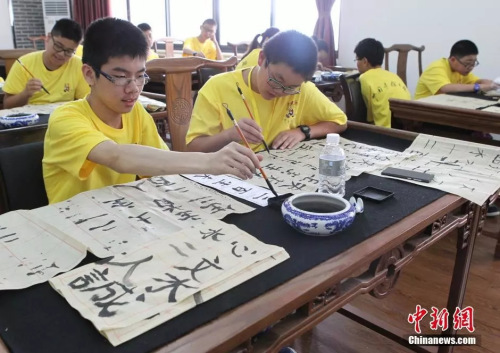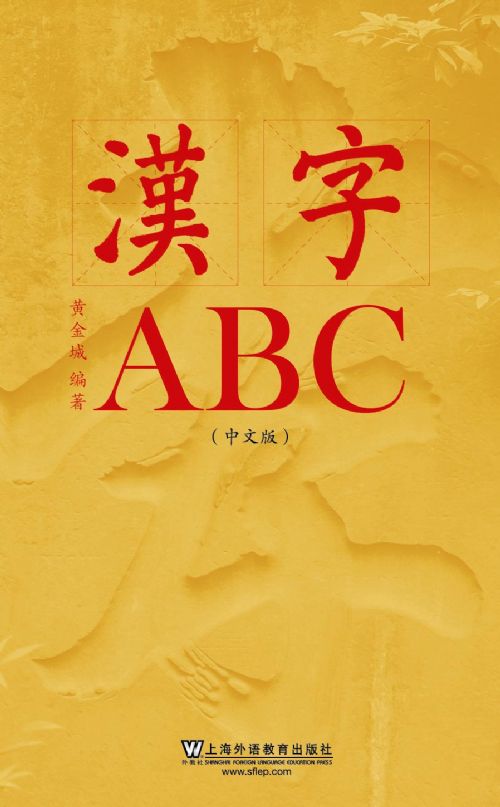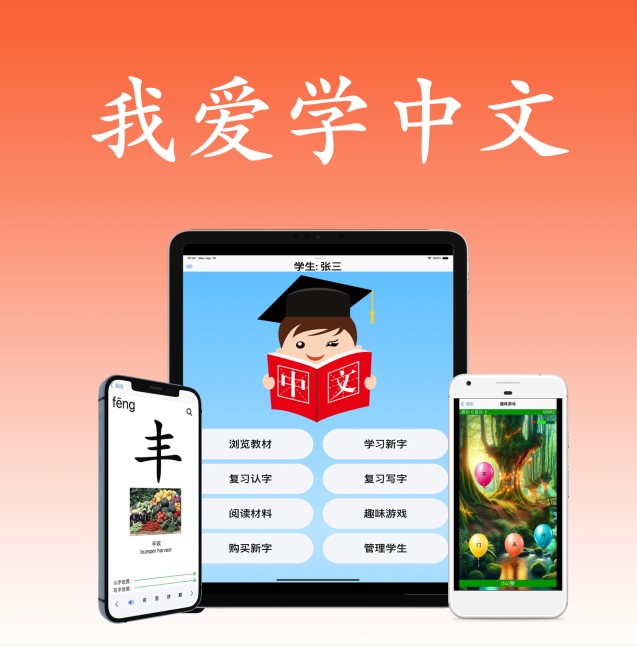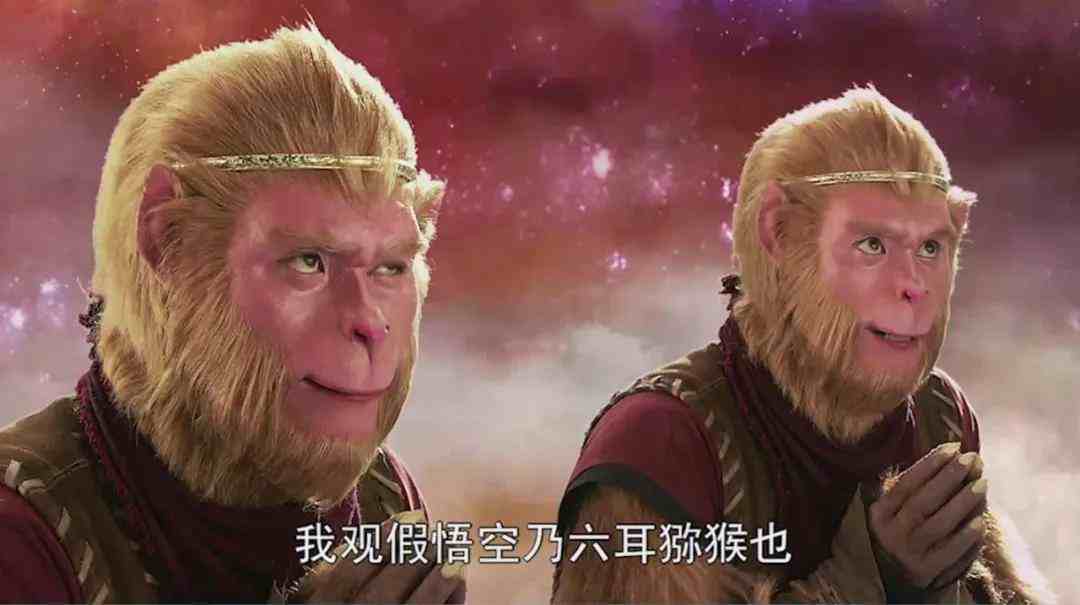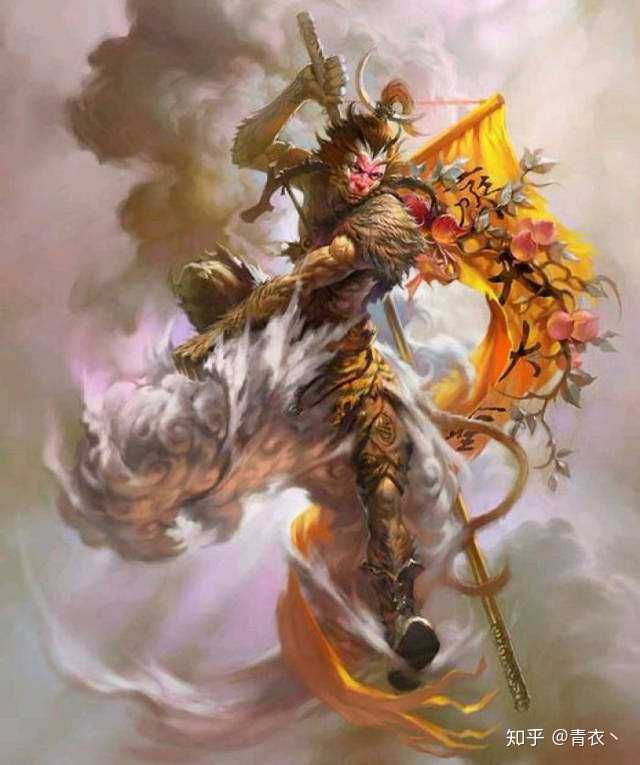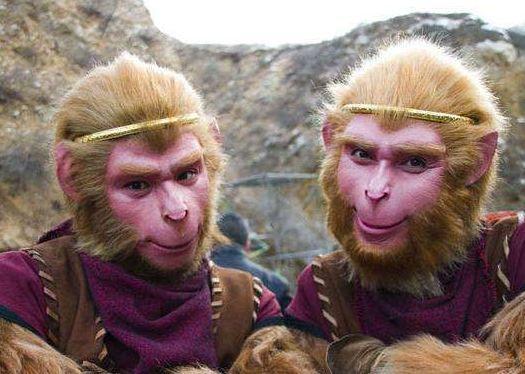resume:
Liang Baigeng, a native of Qingdao, Shandong, was born in 1946
Graduated from Qingdao Arts and Crafts School in 1965
Worked at Qingdao Drawing Mill from 1965 to 1973
Professor at the Academy of Fine Arts, Qingdao University of Science and Technology from 1973 to 1999
He was awarded the title of "Folk Artist" by UNESCO, a member of the China Arts and Crafts Society, a member of the Shandong Artists Association, and a professor of the Academy of Fine Arts of Qingdao University of Science and Technology (former Arts and Crafts School)
Most of his works reflect his unique insights into traditional Chinese quintessence and Western painting style. In the fusion of tradition and modernity, he shows people a familiar yet novel artistic charm. His paintings were invited to participate in the 2010 Grand Palais International Exhibition in France. art exhibition and received high praise from foreign audiences.
Exhibition experience:
In 1995, a personal ink painting exhibition was held in Qingdao
In 1999, the traditional Chinese painting "The Past" participated in the Shandong Qilu Traditional Chinese Painting Exhibition.
Participated in Songzhuang Art Festival from 2007 to 2010
In 2010, he was invited to participate in the International Art Invitational Exhibition at the Grand Palais in France, and his oil painting "Snail Dwelling" was exhibited.
From 2010 to 2012, oil paintings and ink paintings participated in the Asian Art Expo
In 2013, the "Drift·Edge" exhibition of Liang Baigeng's paintings was held at the Aojia Art Museum in Beijing.
In April 2015, Liang Baigeng's contemporary ink painting exhibition "Water·Ink·Color" was held at Heze Art Museum in Shandong.
In 2018, Qingdao Zhongtian Art Museum held "On the Wings of Singing" Liang Baigeng's Contemporary Ink Art Exhibition
Published monographs:
From 1983 to 1999, Shandong Fine Arts Publishing House published monographs such as "Basic Art Tutorial", "100 Questions on Art Self-Study", and "The Beauty of Painting Form".
From 1998 to 2013, "Decorative Figures", "Decorative Animals", "Decorative Flowers", "Decorative Landscapes" and "Creative Sketch", "Creative Color", "Creative Graphic Design" were published by China Textile Publishing House and China Chemical Industry Press. "Creative Three-dimensional Design" and more than ten kinds of monographs and picture albums.
"Run" 2016
"Large" 2016
"Blue Expectation" 2014
"The Old Man in the Red Chair" 2015
Preface – "I'm Thinking"
Liang Baigeng
German artist Gerhard Richter said: "I just want to paint, not to produce ideology. Only the painting itself can make a painting a good work, but the ideology in it cannot." Qi Baishi, Bada Shanren, Wu Changshuo, Van Gogh, Cézanne, and Picasso, the reason why they became epoch-making art masters was not based on any ideology, let alone political right and wrong, but on the uniqueness they created. artistic language. This unique artistic language and artistic concept gives the familiar objective world a new expression of various types and levels, making us seem to see a more ideal world. They are great practitioners and promoters of artistic development.
Under the guidance and teachings of these art masters, I yearn for this creative art path. I am not satisfied with imitating and reproducing nature that I am too familiar with, nor am I satisfied with imitating and repeating the footsteps of others, including these masters.
I longed to make my own way.
However, the road to creation is so difficult. Just imagining things out of thin air and messing things up will not work, nor will it work without rational thinking and a lot of practice…
I have experienced countless failures and painted thousands of useless paintings…
Lu Xun said: "The characters I write are based on this person's eyes and that person's nose"… Where is the "eye and nose" of the language of the art form that I am looking for? ….
I copied the works of traditional masters. I devoted myself to studying the characteristics of materials and techniques used in craftsmanship. I also concentrated on studying folk art…
I think that the combination of different DNAs that are far apart can produce stronger life. I turned my attention to Western exotic art, learning from masters such as Picasso, Dali, Miro, Kerry, Warhol, Sever, etc., and learning from contemporary art. African art, Mayan art, Indian, Greek art, and Eskimo art have all become the objects of my study. Children's graffiti, flawless artificial natural shapes, various imprints, and instantaneous natural phenomena all arouse my great interest. The various dry, withered, burnt, and moist changes that appear on the rice paper with the brush, water, and ink, as well as the magical changes of the water and ink on the rice paper, fascinate me.
I spent a lot of time and energy on this, and ruined a lot of rice paper, just to find the sacred art form language that I vaguely yearned for. But I have experienced too many failures and also tasted the joy of slight gains.
Innovation is as difficult as reaching the sky.
However, my interest is getting stronger day by day and I never tire of it.
I am willing to work tirelessly to gain more creative joy.
"Mountains and Flowing Waters" 2016
"In the Jungle" 2012
"Returning with the Wind" 2013
Comments on Liang Baigeng
"Mr. Liang Baigeng's works have traditional Chinese brush and ink skills, as well as the influence of Western painting colors. It is not easy to form your own style on the road of painting creation, and Mr. Liang's artistic style is very distinctive."
——Yuan Boping (Professor of Cambridge University, UK)
️“After seeing Mr. Liang Baigeng’s exhibition, I was greeted by a youthful atmosphere full of youthful vigor. His paintings do not look like they were painted by an old man who is nearly seventy years old, but like the works of a young man. . His ability to control pen and ink is very proficient, and his ability to use color is very sophisticated. It can be seen that he has very solid skills in oil painting. He has made many new breakthroughs in exploring new expressions of contemporary ink art."
——Li Wenru (former deputy director of the Palace Museum in Beijing)
️"Teacher Liang Baigeng is a versatile artist with comprehensive abilities, and his research covers a wide range of areas. He not only has traditional and solid basic skills, but also has extensive research on Western painting and contemporary art, which is very necessary for a contemporary artist. He uses color as ink, and his color and ink paintings allow the expressive power of traditional Chinese painting and ink to show a wider space. He is also a famous decorative painter himself, and he integrates decorative elements into his color and ink creations. , giving his color and ink paintings a new style and taste, and a new appeal. ——Meng Haidong (Director of the Beijing Symphony Orchestra)
"Teacher Liang Baigeng's works have a combination of brush and ink, color, tradition and contemporary style, which is commendable."
——Zhang Donghong (contemporary artist)
"Mr. Liang's works are full of artistic spirituality and creative inspiration and exploration. The process of appreciating his works is the process of enjoying beauty. He is a teacher and artist that I admire and respect. His paintings are unique and very famous in the country. I can see that he will produce more masterpieces and paint more, better and far-reaching works."
——Wang Shaobo (Dean of the Academy of Fine Arts of Qingdao University, Chairman of Qingdao Federation of Literary and Art Circles, Chairman of Qingdao Artists Association)
Mr. Liang Baigeng said:
I have pursued two goals throughout my life: first, to be able to resemble the artist, but with the greatest difference from reality; second, to distance myself from the masters and others in terms of modeling, coloring, techniques and other styles to create my own artistic look. My current contemporary color and ink paintings combine three elements:
1. Traditional brush and ink elements
2. Western paintings center on color and include contemporary art elements of conceptual awareness.
3. My decorative art is full of elements of imaginative transformation and color change.
"Guangling Song" 2019
"Eight Horses" 2019
"Eight Cows Picture" 2017
"Fishing" 2019
"Horse Release" 2015
The painter is the creator | Interview with the painter Liang Baigeng
If art is regarded as a kind of spiritual practice, then there will always be people who are willing to spend their entire lives practicing it. If art is regarded as an ideal, then there will always be people who are willing to pursue it with all their energy. For painter Liang Baigeng, this is exactly the case.
Liang Baigeng, born in 1946, is still very talkative even though he is over seventy years old. Mentioning the past events of decades ago, one can still recount the treasures one by one, which makes one have to admire the spirit of this old artist.
Liang Baigeng was admitted to Qingdao Fine Arts College in 1962 and officially embarked on the path of professional painting study. In 1965, due to historical reasons, the school was renamed Qingdao Arts and Crafts School and implemented a three-year technical secondary school system. Liang Baigeng, who graduated a year early, was assigned to work in the Qingdao Drawing Mill.
"After I entered the factory, I was completely out of touch with my major. I just did manual labor in the workshop for seven years. But I still used my spare time to paint secretly, which not only preserved my hobbies, but also I continued the habits I had in school. It was not until 1971 that the factory began to pay more and more attention to my artistic ability, began to promote me, and encouraged me to innovate in craftsmanship."
In 1973, Qingdao Arts and Crafts School resumed enrollment. It was also in this year that Liang Baigeng was transferred back to the school and officially began his teaching career. Because his basic skills are extremely solid and he has a wide range of interests, from Chinese painting to oil painting, and even comic books, he can handle almost everything, so he is nicknamed "Taiwan Balm" and "Yunnan Baiyao" by his colleagues. Later, the school opened a sculpture major. Since there were no professional teachers, Liang Baigeng was sent to Zhejiang Academy of Fine Arts for further study. He immediately resumed teaching after returning.
Liang Baigeng is good at fine lines and it is precisely because of this specialty that he was "forced" to start studying decorative arts with the mobilization of all parties. From this, Liang Baigeng opened a new door to art. In the following thirty years, he made many achievements in the field of decorative painting and became an important representative figure in Qingdao's decorative art circle.
After the Cultural Revolution, the dawn of culture once again illuminated the long-deserted land, and a large number of foreign translations were gradually introduced into the country, including various art treatises and color-printed picture albums. Liang Baigeng, who came into contact with Western literary and artistic trends for the first time, jumped into this new world of knowledge almost ecstatically, buying books, borrowing books, copying books… and eagerly absorbing the nourishment of art. Although many conservatives sneered at abstraction, Liang Baigeng frankly stated that he was "ashamed because he could not understand", and at the same time he also established a philosophy – do not make rash comments on things that you cannot understand.
"In 1980, I set strict rules for myself: not to participate in any group activities or exhibitions, and determined to study for ten years."
Arnheim, Gombrich, Van Loon, Nietzsche, Heidegger, Sartre… Through extensive and uninterrupted reading, and infiltrated by Western philosophy and aesthetic theories, Liang Baigeng gradually felt that " Its daybreak". Nietzsche's "God is dead" had a particularly great influence on him. In the history of modern art in the 20th century, bold behaviors such as de-idolization, de-authorization, and breaking of conventions have become important guiding ideas in Liang Baigeng's artistic career.
Influenced by the 1985 New Wave, Qingdao’s “Open-Air Painting Exhibition” from 1987 to 1990 further promoted the advancement of local artistic concepts. Liang Baigeng said that in the 1990s, he slowly began to have ideas. In 1995, he held his first solo exhibition, trying to use traditional brushwork to present new concepts. Although he has received praise from all walks of life, he believes that he is not mature yet and still needs to continue to "explore up and down."
Since then, Liang Baigeng's paintings have received more and more recognition. His attainments in the field of decorative arts have become more and more proficient, and his achievements in basic art teaching and research are even more impressive. However, after being appointed to an administrative position by the school, he gradually felt bored and chose to retire early.
"After he retired, schools from all over the country lined up to hire him, so he continued to teach. During this time, he also accumulated a lot of experience."
Even though he was famous and lived a comfortable life, Liang Baigeng did not stop moving forward. In 2008, he and his wife resolutely packed up their bags and headed to Songzhuang, opening up new horizons again.
"Songzhuang is an interesting place. It brings together various schools and classes, including unknown dreamers and great painters who have been famous for a long time. But because of this, you can come into contact with many new and different things. idea. I stayed in Songzhuang for eight years, and the works of this period also incorporate some of Songzhuang’s contemporary consciousness.”
In 2010, Liang Baigeng was invited to participate in the 2010 International Art Exhibition of the Grand Palais in France. Many people praised his paintings, "A seventy-year-old person can paint the feeling of a thirty-year-old". But when he visited the Louvre and the Pompidou Art Center in France, he discovered that "what we are painting has long been painted by foreign painters." Because of this, in order to no longer follow the footsteps of Western painters, Liang Baigeng finally positioned the center of his creation as traditional Chinese ink painting.
In 2013, "Wandering Edge – Liang Baigeng's Painting Exhibition" was held at the Oga Art Museum and received encouragement and recognition from all walks of life. To a certain extent, this exhibition can also be regarded as a stage summary of the Songzhuang period. In addition to many excellent paintings, a large number of manuscripts are also on display. The seven to eight meter long booth is lined with sketches, which are the footprints of life and the trajectory of creation.
For a long time, Liang Baigeng did not paint large-scale works, but insisted on sketching in notebooks. For him, this is a way of recording and an artistic experiment. He would also carry a notebook with him when he went out, and when he had a good idea, he would immediately put it into writing.
"Many thoughts are like meteors passing across the sky, fleeting and fleeting. They need to be written down immediately so as not to miss them. While painting, they are often accompanied by thinking. These drafts are a record of inspiration and an accumulation of experience. Three years later If you look again, you may still be inspired and gain something.”
The essential meaning of painting lies in its non-replicability, which is what Benjamin called "the aura of art". In Liang Baigeng's view, a good painting is still excellent even if it is not finished or stopped at any stage. Even if it is only a semi-finished product in the end, it will not damage its artistic charm.
In recent years, Liang Baigeng still insists on ink creation, and at the same time, he continues to make new attempts in color ink. He said that colored ink means using colors as ink. The ancients said that ink can be divided into five colors, and colors can also be divided into light and dark shades. Decades of study and exploration of various art forms are blended on paper, eventually forming a unique style.
"Water, ink, and color are the three elements of my creation. Specifically, they include the traditional brush and ink elements, the contemporary art elements of Western painting that center on color and include conceptual awareness, and the elements of my decorative art that are full of imaginative deformation and color changes. .”
When it comes to realism and abstraction, Liang Baigeng said that he has pursued two goals in his life: first, image, but it must be as different from reality as possible; secondly, styles such as modeling, coloring, and techniques require distance from masters and others to create his own art. face. In Liang Baigeng's view, art is a road with no end. "Progress is the inevitable pursuit."
At present, there are more and more large-scale art exhibitions in China, but Liang Baigeng is not keen on such exhibitions. He admitted frankly that he is not interested in "subject matter" because there are too many ideological elements in it. He said that self-feeling during the painting process is crucial.
"The subject matter of painting is eternal. The key lies in how to paint. The form is very critical. If you blindly cater to it, it will only lead to your own alienation in the end. This is what Sartre called others as hell."
Talking about decorative art, Liang Baigeng said that many people now have a prejudice against decorative paintings and believe that "contemporary" and "decorative" are contradictory. This is actually a misunderstanding. The reason for this misunderstanding is certainly related to the long-standing inherent prejudice, but it also has a lot to do with the stagnation of decorative painting over the years.
"Decorative painting naturally has its decorative significance, but it should still be based on painting, and artistry should be given top priority. The painter should not just stay at the stage of depiction, but should be the creator. Even for decorative paintings, there needs to be Novelty and individuality. Many paintings by famous contemporary painters, including David Hockney, are highly decorative, which does not affect the artistic value of these paintings."
Liang Baigeng believes that a major feature of decorative painting is that it breaks the constraints of time and space and can develop imagination to the maximum extent. In addition, there are many expression methods that can be tried. "The whole is unchanged, but the part is variable."
Having been engaged in education for decades, Liang Baigeng has his own unique teaching philosophy. As early as the 1970s, he used "diversified expressions of the same object" to conduct classroom demonstrations and guide students to find the painting methods that interest them. In his view, as long as there is a sense of independence and innovative ideas in the work, even if the technique is immature, it is still worthy of praise. But he also believes that the current education system is not easy to cultivate real artists. Nowadays, many masters hold classes, and the students draw like the teacher, without their own personality. This is a kind of inbreeding, which is very detrimental to the long-term development of art. There needs to be "introduction" and "grafting", and with the mixing of multiple genes, art will have variability and stronger vitality.
"Cultivating students is like sowing seeds. When a seed is sprinkled into the ground, whether it is a peony or a foxtail, it is beautiful and natural. You have to allow all possibilities for germination. I have never been able to do that. Instead of restricting students more, encourage them to paint whatever they like and how they like to paint. In addition, we must also learn to observe in the process of sketching. One life is two, two is three, three is all things, and all things are unified. Of course, You still need to have basic things, and you still need to learn techniques, and you can't be too good at everything. The formal beauty and laws of art require hard work to study. Only with a solid foundation and a broad vision can you provide more for your creations. optional directions.”
Liang Baigeng, who was awarded the title of "Folk Artist" by UNESCO, has devoted himself to the study of folk art for many years and has collected a large number of paper-cuts, embroidery, ceramics, wood carvings, theater props… and even from India, Egypt, Africa, Maori , many ethnic handicrafts of the Eskimos. In Liang Baigeng's view, the closer something is to the land, the more primitive it is of divinity. This also confirms his insistence on "original innovation" – that is, returning to the origin of history, abandoning the knowledge system of human civilization, examining and observing the world with the purest and most curious eyes, and ultimately giving birth to a new aesthetic angle.
Liang Baigeng advocated that the study of art cannot be picky and requires multi-faceted absorption and digestion. "Eat everything, don't be greedy for anything." Diversified expression methods are not only artistic pursuits, but also a kind of emotional expression. Traditional good things must be preserved, but new good things must also appear. Innovation is a process with only a beginning and no end. Only by maintaining a humble attitude can we continue to learn and make progress. At the same time, we cannot be limited by the techniques and ideas of our predecessors, we must have our own independent expression. "Just like when cooking, you can't just follow the recipe. You have to be creative and constantly adjust the taste."
"Painting is to first create contradictions and then unify. You need to find concreteness from abstraction and order from chaos. In this process, self-liberation is the most important. Don't put too much pressure on yourself. Only when you can achieve relaxation Only in this state can one be as if there is no one around, which is what Buddhism calls all dharmas without self and all actions impermanent.”
There are many outstanding painters in Qingdao's traditional Chinese painting circle. In Liang Baigeng's view, everyone has their own pursuits in art, and it is impossible to easily define a "successful" example. The only thing I can do is to continue painting. Anyone who is familiar with Liang Baigeng knows that this senior figure in the painting world does not participate in social activities and his daily life is almost completely occupied by painting.
"For me, painting is not work, but a way of rest. I always have the passion and impulse to create in my heart, and I have always advocated that I finish today's work and draw it as soon as I have inspiration. If possible , I really want to live and paint for another fifty years.”
Time can age our appearance, but it cannot erase the passion within. The one-way life and the multi-directional art are intertwined, just like the hearty, wide-open ink and color in Liang Baigeng's paintings. With perseverance and innovation, we have the emotion to look back and the motivation to move forward.
Chunhongjiu Art Museum
October 2019



